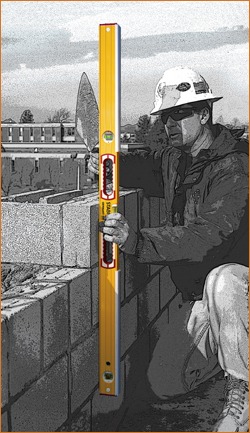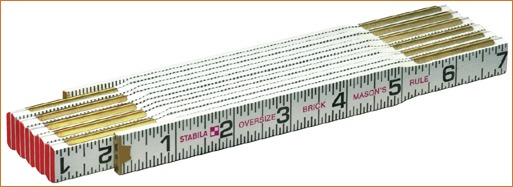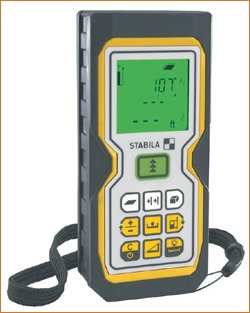Measuring Devices
 |
|
The Lowdown on Measuring Devices
How much would a mistake on the jobsite cost you? Choose your tools wisely.
Measuring devices for construction have changed drastically during the last 10 to 20 years. All types of construction, residential, industrial and commercial, begin and end with critical measuring. Mistakes in measuring and layout will result in costly, time-consuming re-work, which has driven the measuring industry to evolve into high technology.
More than 120 years ago, a measuring tool called a “folding ruler” was born. A deep understanding of the construction industry and a realization that craftsmen needed a better tool for measuring over a distance drove a German company to create a compact measuring tool that would change the way contractors worked.
A direct descendent of the folding ruler was created in the early-1900s: the tape measure. Now, contractors could measure 30 feet or so with a measuring device that fit on their hips.
With technology changing and a real need for accurate measuring over a farther distance, the evolution of the laser measure quickly occurred. Created 30-plus years ago, laser measures were large, temperamental and extremely expensive. During a short time, the technology of laser measuring has evolved into a small, mobile phone-sized unit that fits in a tool pouch or on a belt. These tools measure from 100 to 650 feet.
One person now can take measurements that used to take a lot of time and require multiple people. It is as simple as pointing a laser beam and hitting a button. Within fractions of a second, you’ll get an accurate reading on an LCD screen that is within a 1/16-inch. Now, high-risk measurements result in accurate, dependable readings.
Bubble levels, or “spirit” levels (named years ago because the vials used to be filled with alcohol to keep them from freezing), have been around for hundreds of years. These tools are critical to the day-to-day work done by contractors. The evolution to this type of tool has come in the form of dependability. Since these measuring tools take day-to-day abuse on the jobsites, it is imperative that they are built to sustain accuracy. Lightweight alloy metals and solid acrylic vials also have evolved to improve usability and dependability.

Although more recent, lasers are not new to the construction industry. What is new though is the fact that so many different variations and types are now available to choose from, including rotating lasers; compact, dot or point lasers; and compact line lasers.
Rotating lasers are designed to give a benchmark to jobsites and applications that are 100 feet and larger. Having evolved from expensive measuring tools from 30-plus years ago, these are now affordable staples on most jobsites. What you can find now varies from horizontal rotating lasers meant to work outside on large jobsites, to horizontal/vertical/slope rotating lasers designed to work both inside and outside to assist in benchmarks and layouts.
 |
|
Compact dot or point lasers have been on jobsites for the last dozen or so years. These lasers are used mostly inside and have taken the place of one of the oldest and most dependable tools, the plumb bob. With these compact lasers, the act of transferring a point up or down takes seconds and is not subject to wind.
Compact line lasers probably have evolved the most in recent years. These lasers originally were designed for use inside with a bright, easy-to-use solid line. Solid lines are much easier to see inside than a rotating laser. Since the laser light is spread out through a line, the line becomes hard to see outdoors or in bright light, limiting this type of laser to the indoors in past years. What has changed most with this laser type is the use of pulse technology. By pulsing, or blinking the laser line on and off at a very fast rate, two things have been accomplished: The laser can be seen by a receiver outside over a long distance; and, when used inside, the line still appears to be solid. This has created a new category of lasers that are small enough to fit in tool pouches and are great for indoor use, but also for outdoor work easily up to 100 feet away.